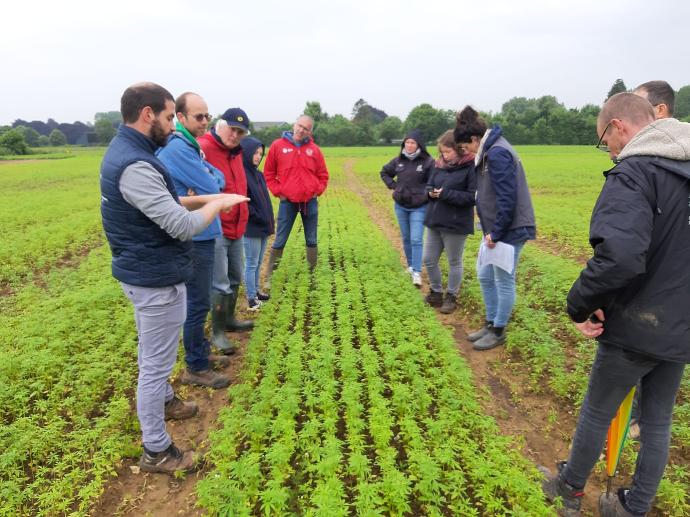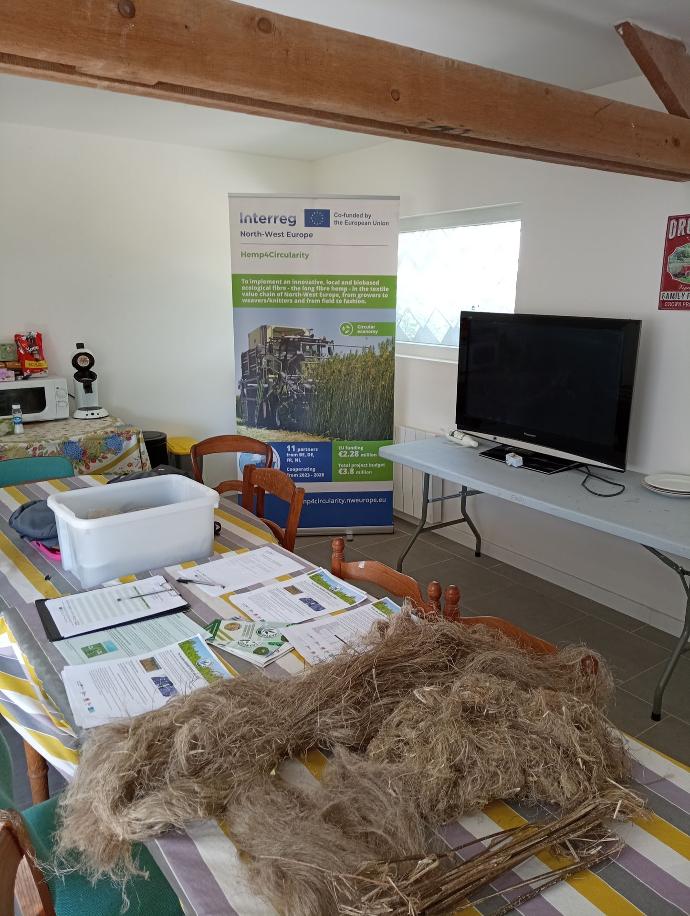While textile hemp is proving to be a promising crop, its cultivation presents numerous challenges, some of which still need to be identified. In France and beyond, could joining forces be the key to success? Recently, Lin et Chanvre Bio organised field visits as part of the Hemp4Circularity project, inviting farmers and technicians to come together and share their progress and the challenges encountered in growing long fibre hemp.
Working together to grow long-fibre hemp
These field visits, held on 18 June and 6 September 2024, took place in the Hauts de France region, in Ostreville and Eplessier. The aim was to make collective progress and refine agronomic practices to promote the sustainable development of this innovative crop.
The discussions brought together growers experienced in growing textile hemp as well as those new to it. Experienced growers shared their successes and difficulties. Scutching technicians shared their knowledge of the region, as well as their views on market development. Agricultural technicians will then be able to disseminate the knowledge shared during these tours more widely to farmers. Quentin Bordier, coordinator for Lin et Chanvre Bio and a partner in the Hemp4Circularity project, relayed the latest project findings.
Discussions focused on the technical itinerary specific to textile hemp: scutching practices, sowing dates and densities, fertilisation, means of controlling corvids, observations of weediness and hemp growth, etc.
Concrete results for a fast-emerging crop
The weather conditions in 2024, marked by heavy rainfall, complicated the analysis of agricultural practices. This was confirmed during the first full tour in June, especially regarding soil structure and root growth.
On the Ostreville plot, soil compaction affected hemp growth. Thanks to discussions between the participants, an effective solution was identified: a slight addition of organic plugs to improve nitrogen uptake. This strategy paid off, demonstrating the importance of sharing experience in the success of the crop.
In Eplessier, corvid pressure proved to be a challenge. Despite this, textile hemp developed well, with a sufficient number of plants competing effectively against weeds. A comparative analysis of the plots revealed the positive impact of the previous crop, a lentil, on the growth of the hemp. This type of observation underlines the potential of textile hemp in suitable rotation systems.
Encouraging prospects for 2025
The second field visit in September provided an opportunity to observe the retting process, a crucial stage in the production of quality fibre. Despite some difficulties linked to the heterogeneity of stalk heights, the scutching technicians highlighted the improvements made to the harvesting machines, particularly upgrades to the Hyler machine, which enhanced field performance. Growers were able to assess the state of retting and anticipate the quality of long fibres, essential for textile hemp. The visits ended on a positive note with the presentation of the first technical and economic results, and discussions on the market opportunities for textile hemp in 2025.
Hemp4Circularity training courses will resume in winter, both indoors and online, before returning to the field in the summer.
Hemp4Circularity: a collective approach for a sustainable future
These initiatives are part of the wider Hemp4Circularity project, which aims to strengthen the circularity of the hemp industry throughout North-Western Europe. Through cooperation between growers, technicians, research centres, etc. the project aims to create innovative solutions for sustainable agriculture, while developing a solid market for textile hemp products.
The collective dynamic that emerges from these exchanges, as observed during the field visits, plays a key role in the success of the project. Drawing on the lessons learned from these meetings, Hemp4Circularity continues to pave the way towards a more resilient textile industry in North-Ouest Europe.


